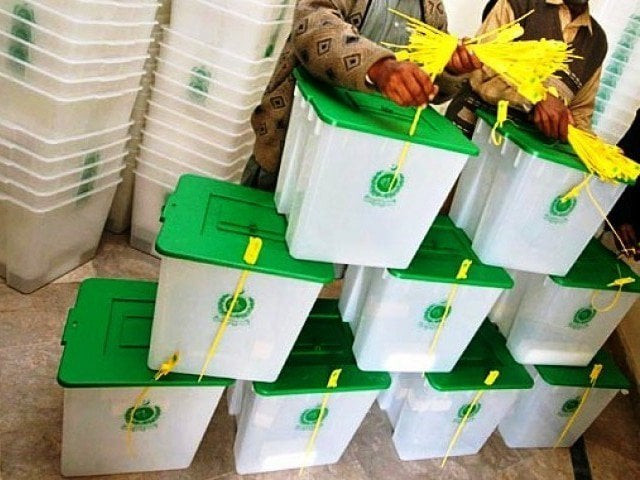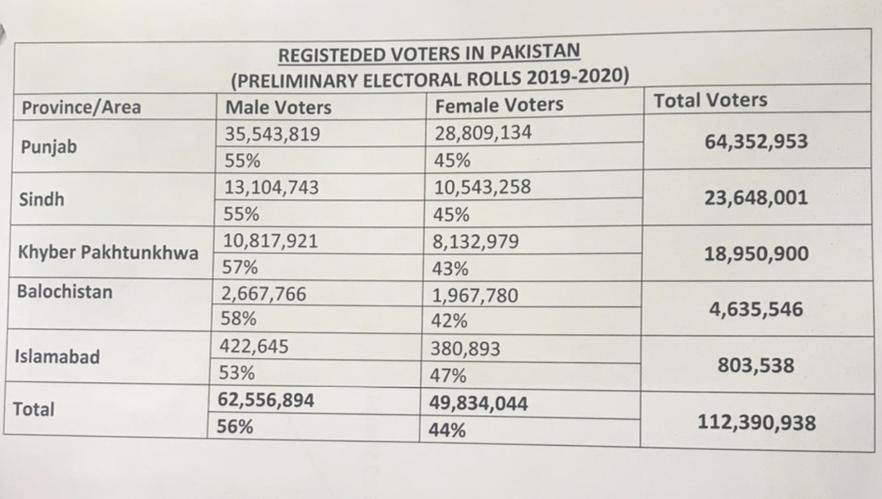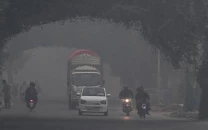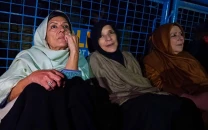Gap between male, female voters widens
Proportion of women among total registered voters reduces from 44.1% to 44%

The country’s polls supervisory body – the Election Commission of Pakistan (ECP) – has tasked its gender affairs wing to reduce the widening gap between the number of registered male and female voters in Pakistan.
According to the latest statistics, the already wide chasm between the registered voters of the two genders has further widened in the last two years – since 2018 – by 229, 733 people.
Right now the total number of registered voters is 112,390,938 – out of which 62,556,894 or 56% are male voters and 49,834,044 or 44% are female voters. The number of male voters two year back was 59, 224,263 or 55.9% and the number of female voters was 46,731,146 or 44.1%.

The total number of registered voters in Pakistan in 2018 was 105,955,409 and the number of registered voters in the two years has swelled by over 10 million people. According to sources, the ECP has now tasked its gender affairs wing to register more and more women voters to reduce this polarity.
In both Punjab and Sindh provinces, 55% of the registered voters are male and 45% are female. In Khyber Pakhtunkhwa (K-P) the ratio of male voters is 57% and the female voters is 43%. In Balochistan, 58% of the registered voters are male and 42% of the voters are female.

In the federal capital, 47% of the registered voters are women with men forming 53% of the voters’ population. The total number of registered voters in Islamabad in Islamabad is 803,538 people.
Women voter turnout in the 2018 general elections stood at 40% with 21 of 46 million registered women voters participating in polling.
According to the elections laws, if the turnout of women voters is less than ten per cent of the total votes polled in a constituency, the ECP is supposed to declare the results invalid and order re-poll.


















COMMENTS
Comments are moderated and generally will be posted if they are on-topic and not abusive.
For more information, please see our Comments FAQ